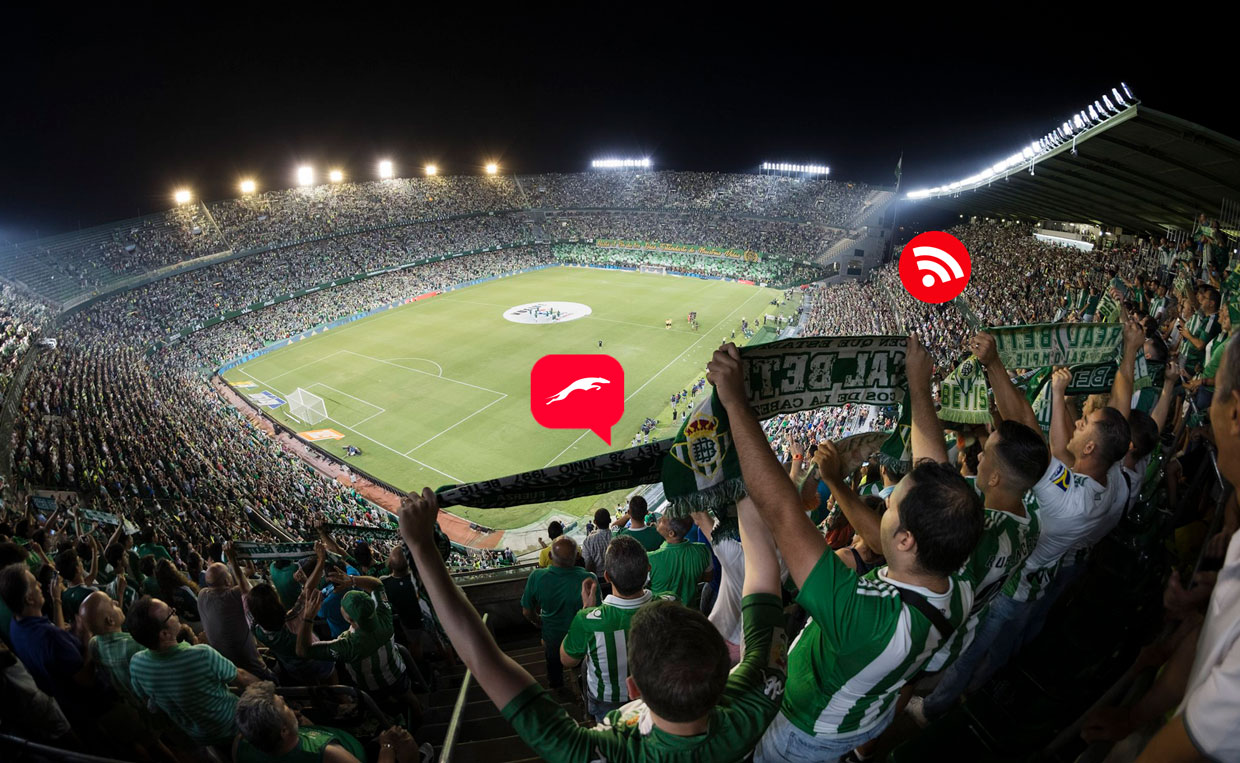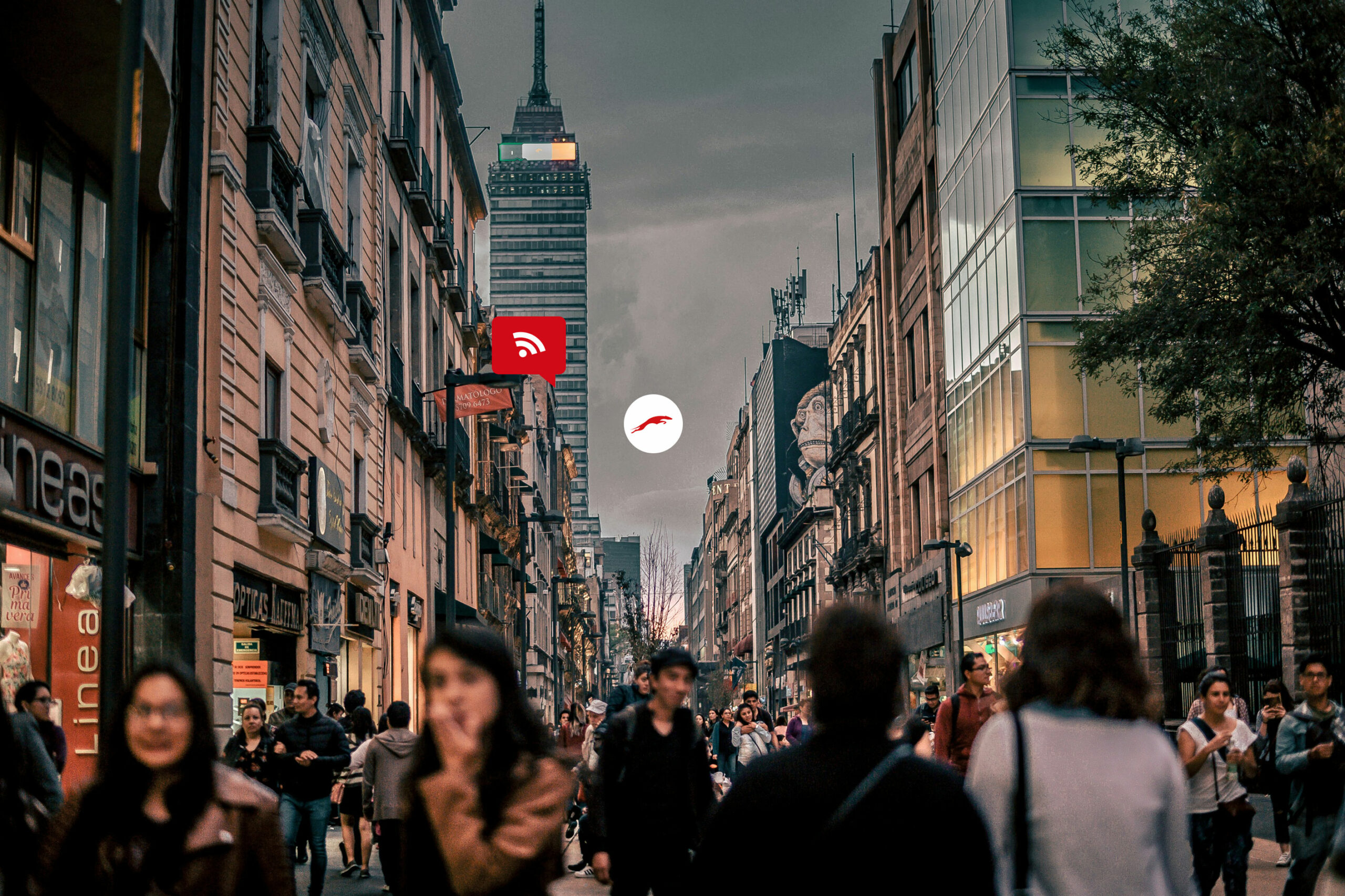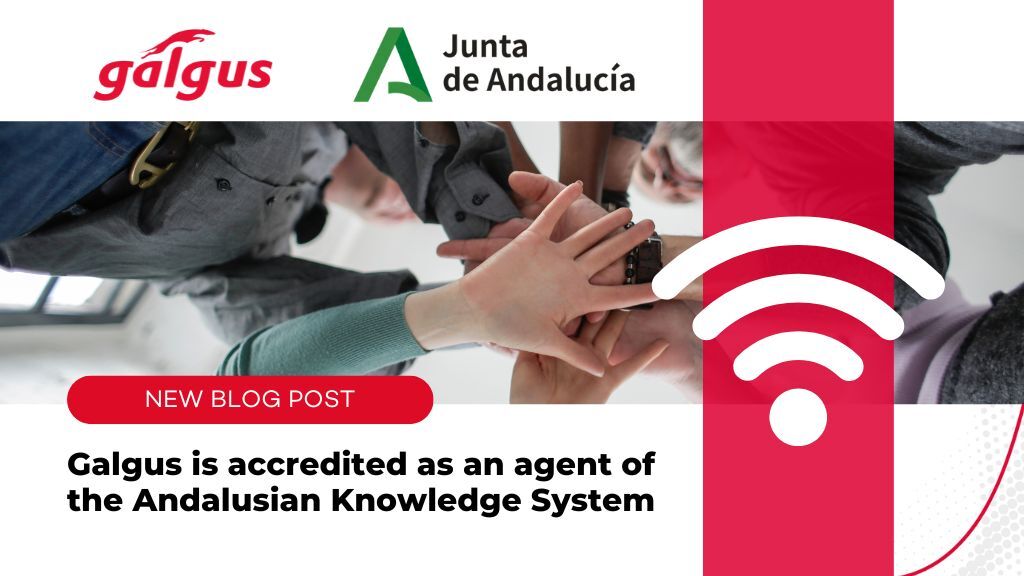The organization of large-scale events, such as football matches, concerts, festivals, theatrical performances and others, entails logistical and technical challenges that must be addressed with innovative solutions.
One of the fundamental pillars to guarantee success is to have robust Wi-Fi connectivity and real-time analytics technology, capable of offering accurate information on people flows and the occupation of each area.
In this article, we delve into how Galgus’s technology combines AI-optimized Wi-Fi and location analytics (RTLI) to turn large venues into smart, agile, and secure spaces.
Key challenges in organizing mass events
Management of large crowds
In a packed stadium or at a massive concert, overcrowding can lead to bottlenecks, endless queues, and a poor experience for the public. It is critical to have tools that help visualize in real time how many people are at each access point or area, and how they move throughout the venue.
Having this information facilitates immediate decision-making. For example, enabling a new access route, reinforcing security or proposing alternative routes, to improve mobility and avoid saturations.
User connectivity experience
Poor connectivity in areas with high public density is a common problem. Many spectators want to share their experiences through social networks, make video calls or simply have access to official event applications.
If the connection does not respond, this digital experience is diminished and can negatively influence the overall perception of the show.
Surveillance, security and emergencies
In environments with thousands of people, it is essential to have a constant monitoring system that allows you to supervise restricted areas or detect unauthorized presences.
In addition, fluid communication between security personnel and organizers is vital to respond quickly to any incident, from medical emergencies to security incidents.
Galgus’s Solution: Deterministic Wi-Fi and Location Analytics

AI-optimized connectivity (CHT)
Galgus’s Cognitive Hotspot Technology (CHT) gives distributed intelligence to each Wi-Fi access point. Far from requiring a central controller to process all the information, each node analyzes and shares occupancy and interference data with the rest, allowing the network to readjust automatically and instantly. Among its algorithms, we highlight:
- Proactive Load Balancing: distributes users evenly among available access points, reducing saturation and improving speeds.
- Smart Roaming: allows fluid transitions when moving around the premises, avoiding the dreaded “cuts” when changing AP.
- Traffic Control: helps prevent some users from monopolizing bandwidth, protecting the service for all attendees.
RTLI: Real-time location data.
The other great asset of Galgus is its geolocation analytics, also known as RTLI (Real-Time Location Insights). Thanks to patented algorithms, it is possible to identify and count devices with 95% accuracy, even if they are not connected to the network.
Thus, venue managers can know capacity and flows live, detect excessive concentrations, and even monitor restricted or special interest areas. Among its main qualities, we can highlight:
- No apps or permissions required: the user does not need to download anything or activate Bluetooth or GPS.
- Anonymization at the edge: privacy is guaranteed, as the solution complies with regulations and does not collect identifiable personal data.
- Minimum infrastructure cost: existing Wi-Fi network is used, without the need to deploy other technologies.
Specific benefits for managers and attendees
For organizers or managers
- Infrastructure optimization: with presence data, flows can be redirected in real time, staff can be reinforced in collapsed areas or new access areas can be opened.
- Reinforced security: by monitoring possible intrusions and anomalous movements, security personnel can act before they turn into serious incidents.
- Greater employee performance: internal communication remains stable and fast even in high-density environments, allowing better coordination of all operations.
- Cost savings: Galgus’s technology self-adjusts, reducing the need to invest in external controllers and minimizing the risk of critical failures that affect the reputation of the event.
For the attending public
- Stable connectivity in high-density areas: whether to share photos, videos, or make video calls, the experience remains fluid and uninterrupted.
- Smart queue and flow management: the organizer can send alerts or signs that direct attendees to other less congested entrances or exits, reducing wait times and stress.
- Safer experience: with continuous monitoring of what is happening on the premises, spectators feel protected. In addition, the same Wi-Fi network can offer additional services, such as applications with interactive maps or personalized promotions.
Some related success stories
Below are some of the projects that illustrate how Galgus technology improves the management and experience of mass events:
Real Betis: network self-optimization in large stadiums
One of the largest football stadiums in Spain experienced constant coverage and saturation problems.
With thousands of spectators, multiple sources of interference and hundreds of journalists uploading multimedia content during matches, the challenge was to provide a network that was 1 capable of self-optimizing and scaling adequately.
Romería de la Virgen de la Cabeza: managing over 500,000 people
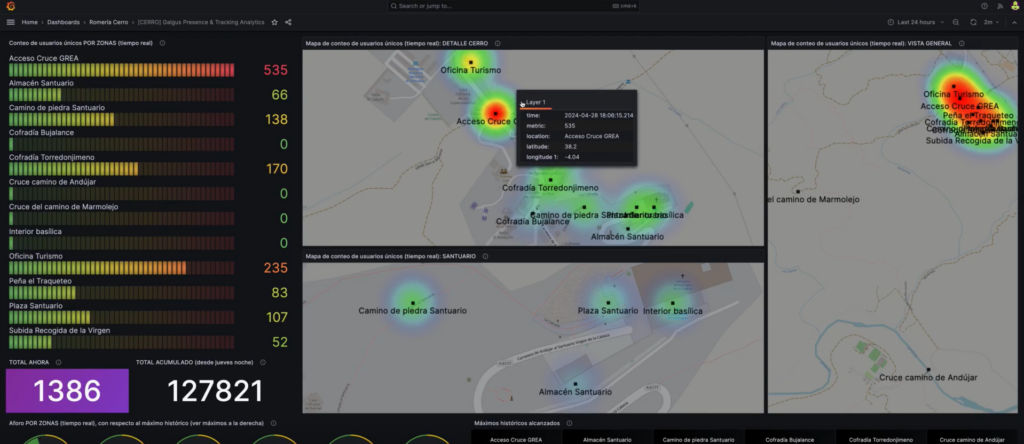
Romería de la Virgen de la Cabeza, in the Sierra de Andújar Natural Park (Jaén), is one of the most emblematic religious celebrations in Spain.
Each year, over a weekend, it gathers a number of people that can exceed 500,000, which makes it one of the largest in the country.
Therefore, and in order to improve the management of public services, security and emergency care during the pilgrimage, we faced the challenge of monitoring capacity and people flows that gathered during those days at key points.
Romería del Rocío: flow analytics for emergencies and public services.
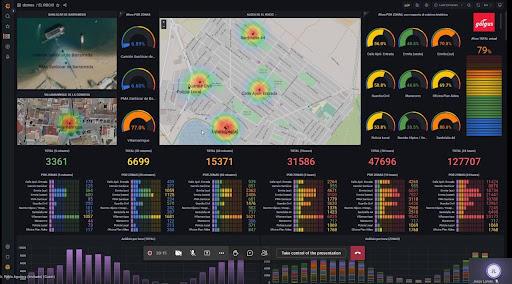
Galgus deployed an infrastructure and technology that allowed monitoring the presence and behavior of the participants of one of the most crowded events nationwide, such as the Romería del Rocío.
With this, it was possible to optimize the management of public and emergency services throughout the village, as well as its main accesses.
The Authorities had a continuously updated Control Panel that could be consulted from any PC, tablet or mobile.
The success of a great event is not limited to the artists on stage or the excitement of the game. Behind the scenes, connectivity and capacity control are decisive factors in guaranteeing the safety and satisfaction of the attendees.
Galgus’s proposal provides a Wi-Fi capable of dynamically adapting to high-density scenarios, while offering advanced location analytics for organizers and managers to make smart decisions in real time.
In an environment where public demands increase day by day, adopting solutions like CHT and RTLI becomes a key differentiator. From user experience to internal management, stadiums, theaters, and massive venues are transformed into safer, more fluid, and connected spaces, aligned with the demands of the digital age.
Do you want to transform your venue and take the experience of your events to the next level? With Galgus, you’re closer than ever.


